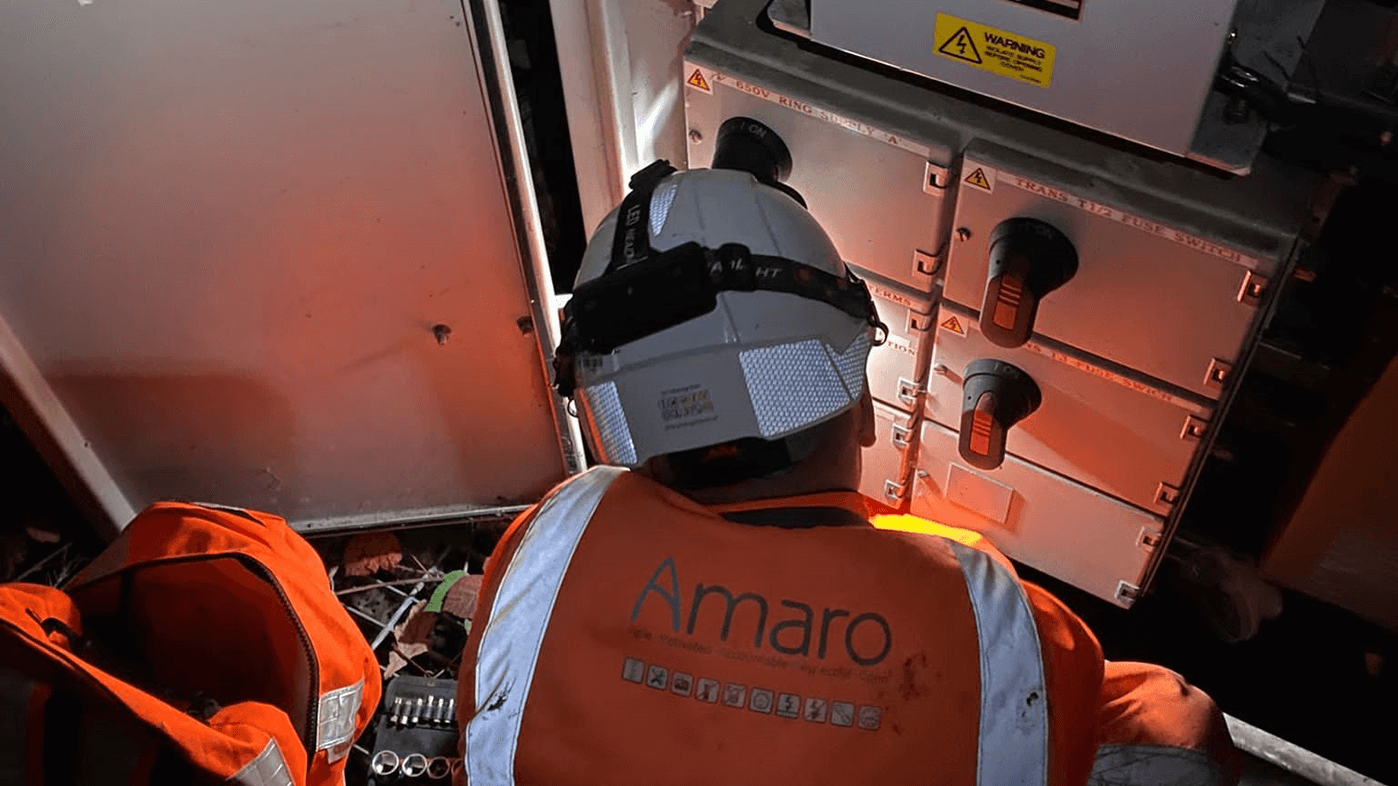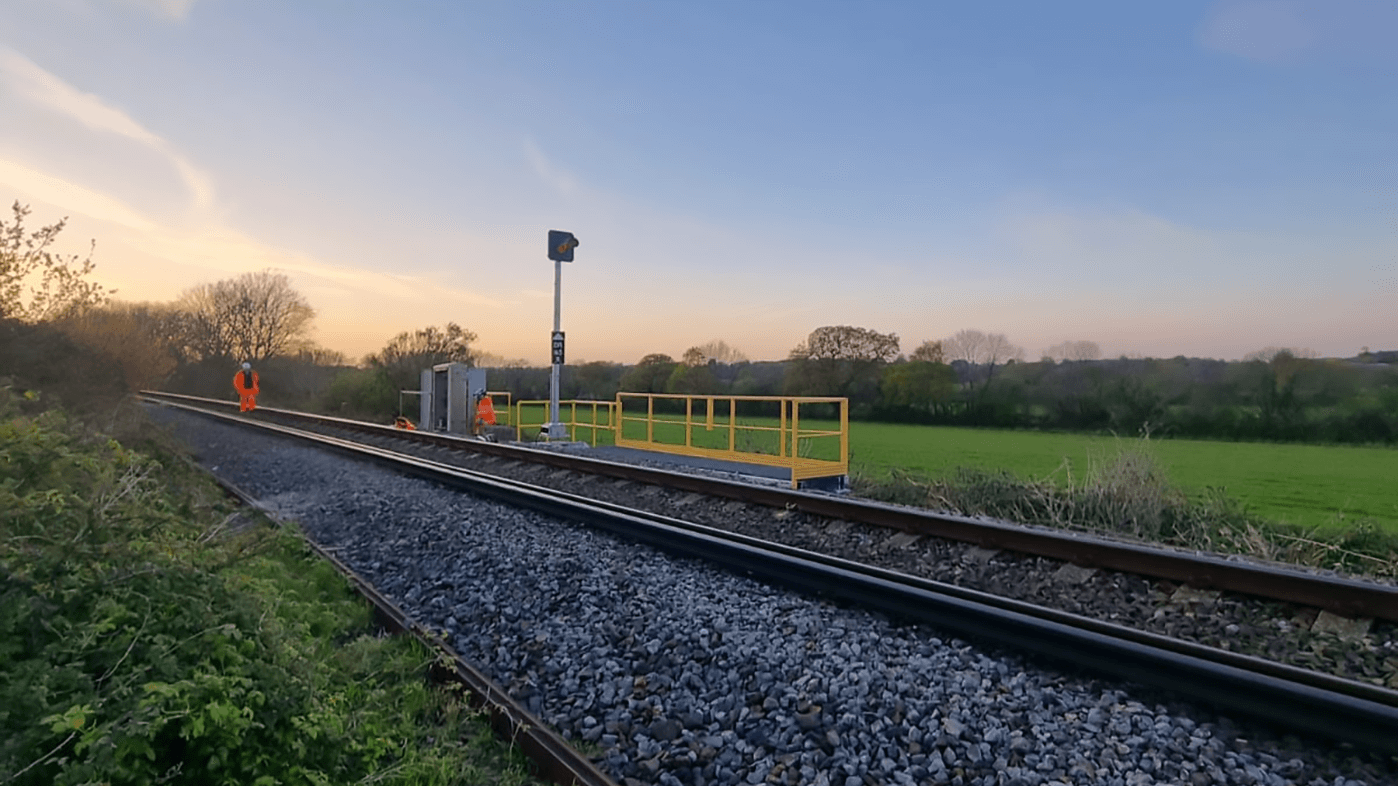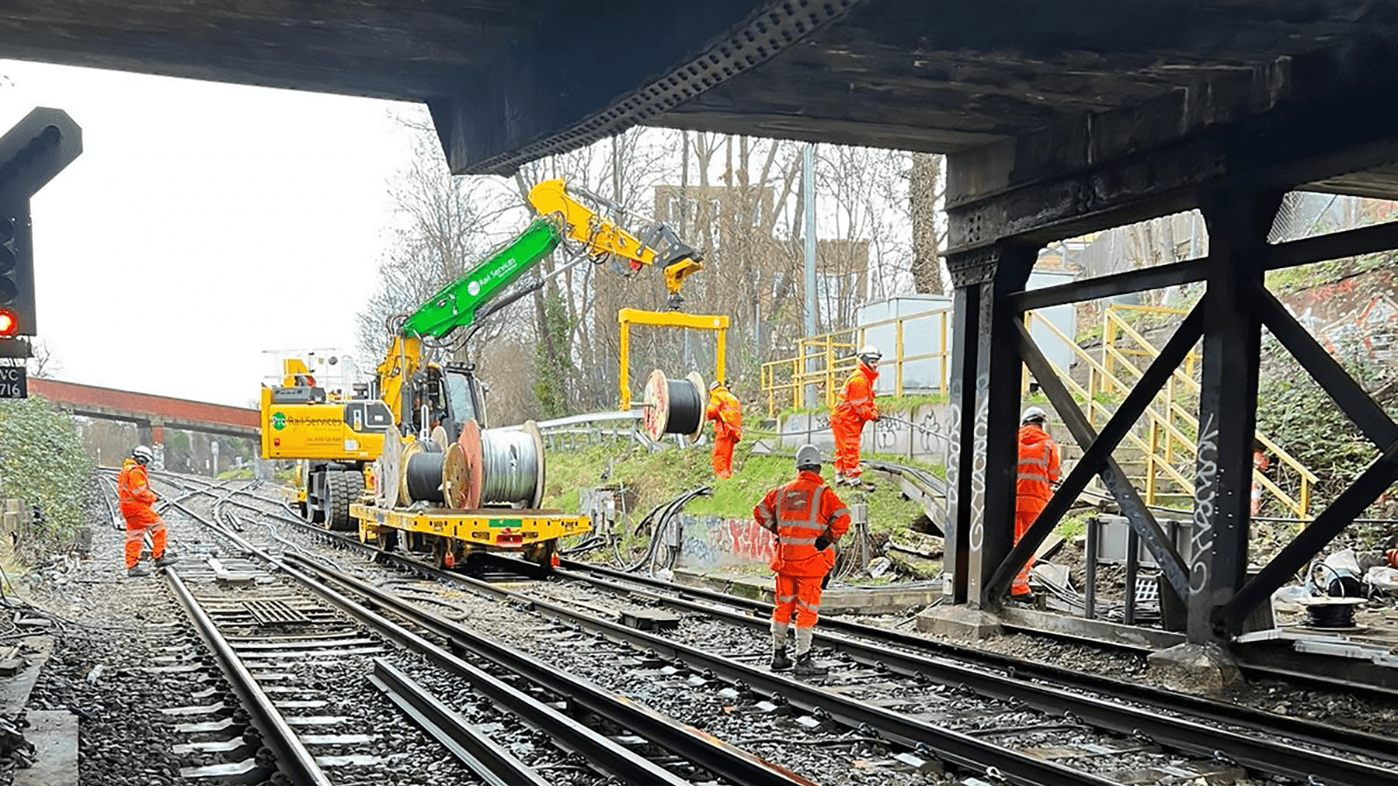The challenge
During routine inspection works, Network Rail’s SMT fault team identified an issue with two 650v signalling power cables in New Eltham. Running from the nearby power pillar, under the track via a UTX and, from there, both up and down the line to the nearest location cases, these faulty cables were causing reliability problems for the local signalling infrastructure, with rail services being affected as a result.
Following the results of a competitive tender process, Network Rail awarded Amaro a contract to replace both cables. And, whilst this aim was achieved, unforeseen complexities arose which led to significant additional works being required.
Hitting site towards the end of 2020, an Amaro supervisory and management team, supported by both plant and labour from Pro Rail Services, began the task of replacing the two 650v BR880 signalling power cables with modern, fibreglass tape, rolled and water-blocked equivalents. Whilst attempting to remove the existing cables, however, it became clear that the UTX was blocked, completely restricting access for our team. Roping and rolling failed to clear the blockage and, whilst jetting was considered, it was ruled out due to the prospect of causing additional damage to the remaining cables.
Following consultation with Network Rail, it was agreed to carry out excavation works in order to identify the issue. Upon further inspection, however, it became clear that the cables in question were severely damaged, having been badly bent at the point of exit from the UTX.
Due to the severity of the damage – and with signalling cables running alongside the power cables – a temporary hold was placed on all works until a properly-planned, appropriate solution could be found.
During this period, however, a third 650v cable failed, cutting power to essential signalling equipment. Working to provide an interim solution, therefore, a temporary troughing run was installed at ground level, carrying and protecting all of the affected cables until such a time as the full UTX works could be completed.
Following the submission and acceptance of our UTX design, we returned to site to restart work, with a thorough HV assessment being carried out prior to the installation of two large UTX chambers.
The solution
An extremely congested site, heavily populated with a mass of utilities, cabling, and other infrastructure, finding a suitable location to dig proved extremely challenging. Even when an appropriate position was identified, the constant threat of HV cable strikes meant that works had to proceed extremely carefully, with an HV competent person being kept on hand to ensure all activities were kept at least 1m from the nearest cable.
Not only did they face significant flooding due to an extremely high water table (tackled by constant pumping), soon after excavation began our operatives encountered a pipe that hadn’t appeared on buried services drawings. Pausing mechanical work to avoid damage, they hand dug around and under the pipe, managing to feed the new multi-ducts under it with barely 50mm to spare.
Due to the location of the site, not to mention the huge volume of rail traffic, arranging suitable access proved to be our biggest challenge. As a result, our main UTX works were delivered across 2 no. 27-hour possessions, with 3 teams working back-to-back, including a 1-hour overlap for handover, 4 hourly updates throughout, and a detailed update supplied following handback.
A challenging project
Whilst Amaro’s original remit has been delivered, thanks to the addition of a new UTX, cable route, cables and more, our time at New Eltham is not yet over, with further shifts being required to run the cables through the new UTX, re-terminate, test, and pair up as necessary.
Once complete, however, these works will play a vital role in eliminating unplanned outages, helping Network Rail to manage the asset far more efficiently.
The outcome
In line with all relevant Network Rail standards, track monitoring was carried out before, during and after the works to ensure that no unacceptable levels of movement were experienced.




